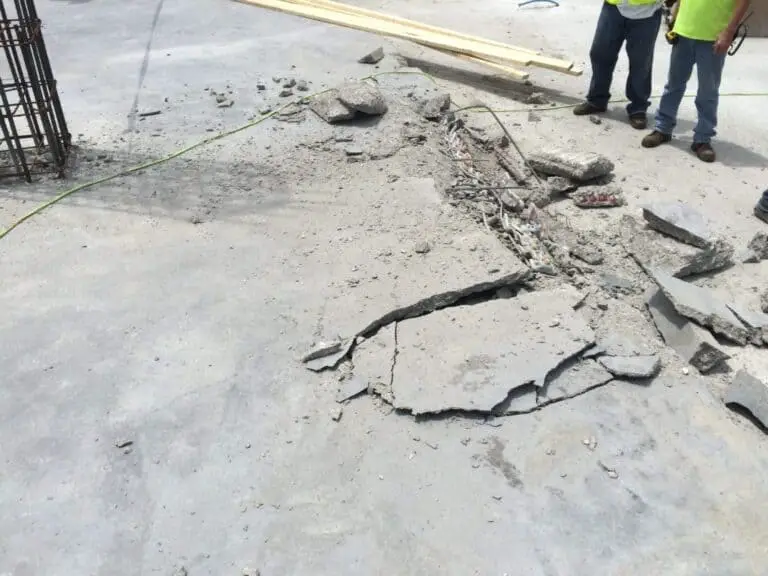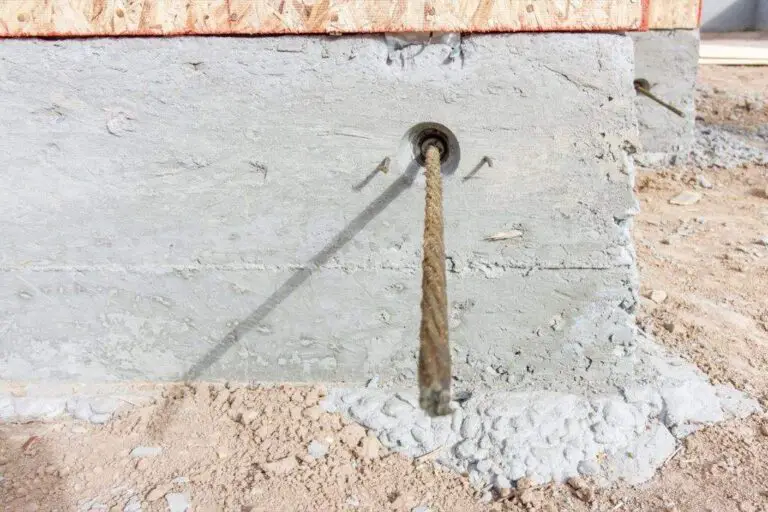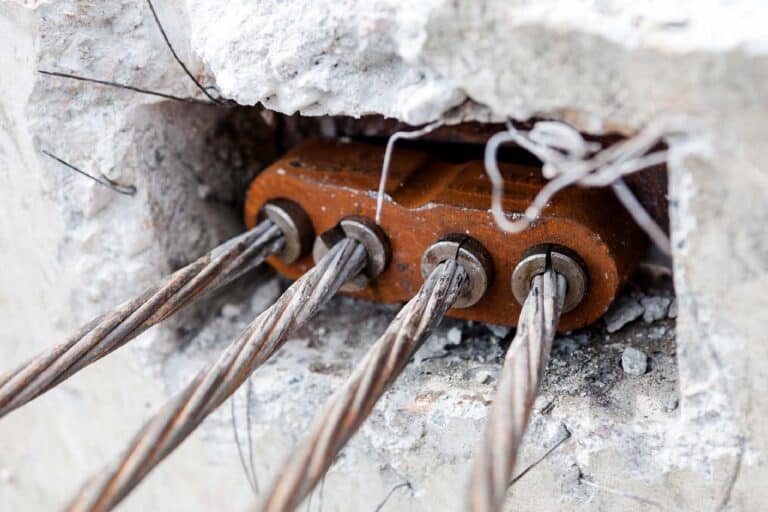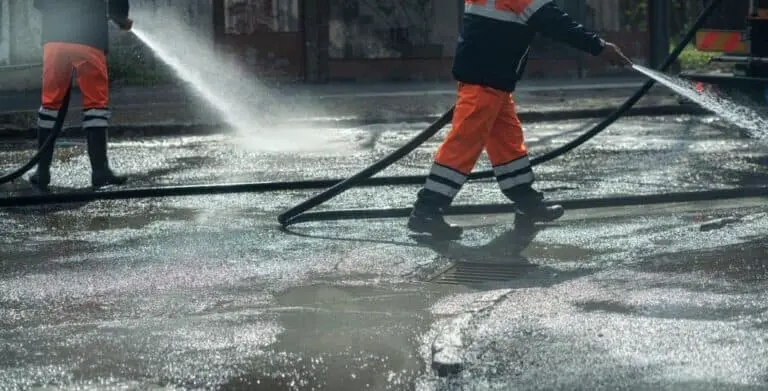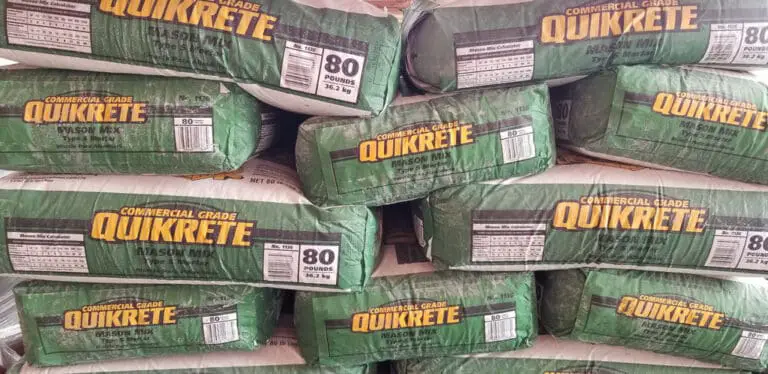How To Do Post Tension Stressing Procedure and Calculation?
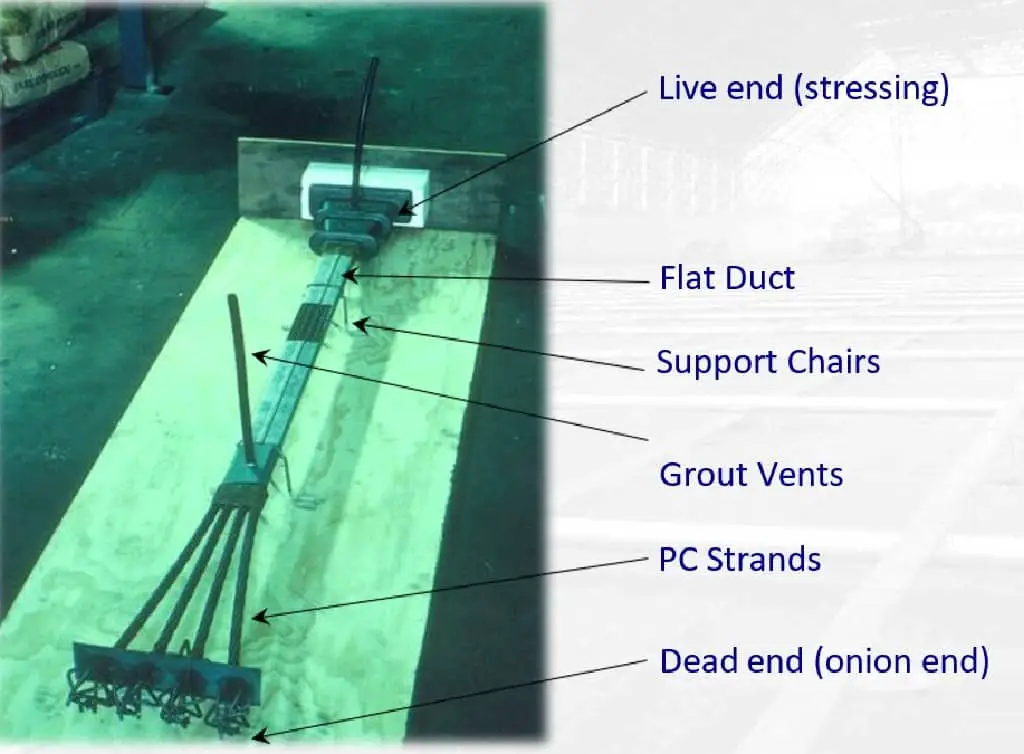
Post-tensioning is a widely used technique in the construction industry to strengthen concrete structures. It involves applying controlled forces to prestressed cables or tendons, which are then anchored to the concrete.
This process helps to counteract the tensile forces that the structure may experience during its lifespan. To achieve optimal results, it is vital to follow proper procedures and accurately calculate the forces involved.
In this article, we will guide you through the post-tension stressing procedure and calculation, providing a step-by-step approach to ensure successful implementation.
Introduction to Post Tension Stressing Procedure and Calculation
Before we delve into the intricacies of post tension stress, let’s establish a clear understanding of its definition and significance. Post tensioning is a technique used to reinforce concrete structures by introducing compressive stress to counteract the tensile forces exerted on the material.
This method provides several advantages, such as increased load-bearing capacity, improved resistance to cracking, and enhanced structural performance.
To ensure the effectiveness of post tensioning, it is crucial to adhere to proper procedures and calculations. Following the correct sequence of steps and accurately determining the required forces are essential for achieving the desired results and ensuring the long-term durability of the structure.
Post-Tensioning Basic
Before we delve into the procedure, it’s essential to grasp the fundamentals of post-tensioning. The post-tensioning system consists of high-strength steel cables or tendons that are inserted into ducts or sleeves cast in the concrete. These tendons are then tensioned using hydraulic jacks, applying a predetermined force to create compression within the concrete.
Components of Post Tensioning Systems
- Steel Strands or Tendons: These high-strength steel cables or strands are the primary elements used in post tensioning. They are typically made of seven wires twisted together to form a single strand.
- Anchorages: Anchorages are devices used to secure the ends of the steel strands within the structure. They play a crucial role in transferring the tension forces to the concrete.
- Wedges: Wedges are inserted into the anchorages to grip the steel strands and lock them in place once the desired tension is applied.
- Ducts: Ducts are protective conduits used to house the steel strands before the concrete is poured. They provide a pathway for threading and tensioning the strands during the post tensioning process.
Types of Post Tensioning Systems
- Monostrand System: In the monostrand system, a single steel strand is used in each duct. This system is commonly employed in residential and small-scale commercial projects.
- Multi Strand System: The multistrand system involves using multiple steel strands in each duct. This system is ideal for larger structures where higher loads need to be accommodated.
- External Prestressing System: In the external prestressing system, the steel tendons are placed outside the concrete section and tensioned after the concrete has hardened. This system is often used in bridge construction.
Post Tension Stressing Equipment and Tools
To carry out the post tension stress procedure effectively, specific equipment and tools are required. Let’s explore the essential tools and their roles in the process.
- Stressing Jacks: These hydraulic or mechanical devices are used to apply the tension to the steel strands. They exert the force necessary to stretch the strands to the desired level.
- Wedges: Wedges are crucial components that grip the strands and prevent them from slipping after tensioning. They are inserted into the anchorages to lock the strands in place.
- Anchorages: Anchorages are used to secure the ends of the steel strands within the structure. They distribute the applied forces and transfer them to the surrounding concrete.
- Duct Former: Duct formers are used to create the pathways for the steel strands within the concrete. They are placed before pouring the concrete to provide a space for threading the strands during post tensioning.
- Grease Caps: Grease caps are placed on the anchorages to protect them from corrosion and ensure smooth movement of the wedges.
- Tensioning Equipment: Various additional pieces of equipment, such as tensioning jacks, pumps, and gauges, may be required depending on the specific post tensioning system and project requirements.
Post Tension Stressing Procedure
Now that we have a good understanding of the components and equipment involved, let’s explore the step-by-step procedure for post tension stressing.
- Preparatory Steps: Before initiating the stressing process, ensure that all necessary inspections have been completed, and any required repairs or modifications have been made to the structure. Verify that the ducts are clean and free from debris.
- Threading the Strands: Carefully thread the steel strands through the ducts, making sure they are properly aligned and positioned according to the design drawings. Ensure that the strands are protected from any damage during this process.
- Anchorage Installation: Install the anchorages at both ends of the steel strands, following the manufacturer’s instructions. Ensure that the anchorages are securely fastened and positioned correctly.
- Stressing Jack Placement: Position the stressing jacks at the designated locations along the structure, adjacent to the anchorages.
- Tensioning the Strands: Gradually apply tension to the steel strands using the stressing jacks. Monitor the force exerted on each strand carefully, ensuring that it matches the specified design requirements.
- Verification and Locking: Once the desired tension is achieved, verify the force by measuring it using tension gauges or load cells. Confirm that the force is within the specified range. After verification, lock the strands in place by inserting the wedges into the anchorages.
- Grouting: Once the strands are locked, inject grout material into the ducts to protect the strands from corrosion and bond them with the surrounding concrete. Follow the recommended grouting procedures and ensure proper filling of the ducts.
- Curing and Protection: Allow the grout to cure as per the manufacturer’s recommendations. Provide adequate protection to the stressed tendons during the curing process to prevent damage.
Calculation of Post Tensioning Forces
Accurate calculation of the required post tensioning forces is crucial for the success and safety of the structure. Several factors need to be considered during the force calculation process.
Importance of Calculating the Required Forces
Calculating the required post tensioning forces ensures that the structure can withstand the anticipated loads and perform as intended. It helps determine the optimal level of prestress needed to counteract the anticipated tensile forces.
Factors to Consider in Force Calculation
- Structural Design: The structural design provides the necessary information about the dimensions of the structure, the expected loads, and the desired performance criteria. Consider the design parameters, such as span length, slab thickness, and anticipated live and dead loads, to calculate the post tensioning forces accurately.
- Tendon Profile: The profile of the steel tendons, including their diameter, number of strands, and their arrangement within the structure, affects the force calculation. Consider the specific characteristics of the tendons to determine the required forces.
- Concrete Properties: The properties of the concrete, such as its strength and modulus of elasticity, influence the force calculation. These properties impact the transfer of forces between the tendons and the concrete.
Methods for Force Calculation
Several methods can be used to calculate the post tensioning forces based on the specific project requirements and design parameters:
- Linear Calculation Method: This method assumes a linear force distribution along the tendon length. It is commonly used for simple structures with uniform loading conditions.
- Parabolic Calculation Method: The parabolic method considers a parabolic force distribution along the tendon length, which more accurately represents the actual stress distribution within the structure. It is suitable for structures with varying loading conditions.
- Finite Element Analysis: Advanced computational methods, such as finite element analysis, can be employed to simulate the behavior of the structure under different loading scenarios. This method provides a comprehensive analysis of the forces and stress distribution.
The calculation of post tensioning forces should be performed by qualified structural engineers or professionals experienced in post tensioning design. It is essential to consider the specific design requirements and consult the relevant design codes and standards.
Troubleshooting Common Issues
During the post tension stressing process, various challenges and issues may arise. It is crucial to be prepared and knowledgeable about common problems and their potential solutions.
Identification and Resolution of Common Problems
- Strand Slippage: If strands slip from the anchorages during tensioning, the tensioning process should be stopped immediately. Assess the cause of slippage, rectify any issues, and re-tension the strands properly.
- Anchor Movement: If anchorages move or disengage from the structure, it can compromise the integrity of the post tensioning system. Consult a qualified professional to determine the cause and implement appropriate corrective measures.
- Grout Voids: Voids or incomplete filling of the ducts during grouting can lead to moisture ingress, corrosion, and reduced bond between the strands and the concrete. If voids are detected, corrective grouting should be carried out promptly to ensure proper protection and bonding.
- Structural Distress: Monitor the structure for any signs of excessive deflection, cracking, or structural distress during or after the stressing process. If such issues are observed, consult a structural engineer to investigate and address the underlying causes.
Post Tension Stressing in Different Applications
Post tensioning finds applications in various types of structures, including buildings, bridges, and other civil engineering projects. Let’s explore some specific considerations for different applications.
Buildings
In building construction, post tensioning allows for longer spans and greater flexibility in architectural design. It is commonly used in high-rise buildings, parking structures, and long-span floors. Some specific considerations for post tensioning in buildings include:
- Floor Systems: Post tensioning can be used to create thinner floor slabs, reducing the overall weight of the structure and increasing the available space. It also helps minimize cracking and deflection.
- Transfer Beams: Post tensioning is often employed in transfer beams, which transfer the loads from upper floors to the vertical elements. This technique allows for open floor plans without the need for additional columns.
- Lateral Stability: Post tensioning can enhance the lateral stability of buildings, especially in seismic regions. It provides additional resistance against lateral forces, improving the overall structural performance.
Bridges
Post tensioning is widely used in bridge construction to enhance the strength and durability of bridge structures. Key considerations for post tensioning in bridges include:
- Long-Span Bridges: Post tensioning allows for the construction of long-span bridges, reducing the number of piers or supports required. This results in cost savings and minimizes the environmental impact on water bodies or transportation routes.
- Bridge Decks: Post tensioning is used to reinforce bridge decks and prevent cracking and deterioration due to traffic loads and environmental factors. It increases the load-carrying capacity and extends the service life of the bridge.
- Prestressed Piles: Post tensioning can be applied to prestressed concrete piles used in bridge foundations. It enhances the load-bearing capacity and improves the resistance against lateral forces and scour.
Other Applications
Post tensioning is also employed in various other civil engineering structures, such as:
- Water Tanks: Post tensioning is used in the construction of water tanks to resist the inward pressure exerted by the stored water. It provides additional strength and prevents leakage or failure.
- Containment Structures: Post tensioning is applied in the construction of containment structures, such as nuclear power plants and wastewater treatment facilities. It enhances the structural integrity and ensures the containment of hazardous materials.
- Slabs-on-Ground: Post tensioning can be utilized in slabs-on-ground, such as industrial warehouse floors or storage yards. It helps control cracking, improve load distribution, and increase the durability of the slabs.
Specific considerations for post tensioning in these applications may include factors such as environmental conditions, anticipated loads, and durability requirements.
FAQs
How often should post-tension cables be inspected for damage?
Regular inspections should be conducted as part of routine maintenance to identify any signs of damage or deterioration. The frequency of inspections may vary depending on the type of structure, environmental conditions, and usage.
Can post-tension cables be inspected without causing further damage?
Yes, non-destructive testing techniques can be employed to assess the condition of post-tension cables without causing additional damage. These methods include visual inspections, magnetic particle testing, ultrasonic testing, and ground penetrating radar.
Are there any preventive measures to minimize post-tension cable damage?
Implementing preventive measures can help minimize post-tension cable damage. These include regular inspections, corrosion protection systems, proper grouting, maintaining adequate concrete cover, and adhering to recommended maintenance practices.
What are the qualifications to become a post-tension cable repair professional?
Becoming a post-tension cable repair professional typically requires a background in civil or structural engineering, specialized training in post-tensioning, relevant certifications, and hands-on experience in cable repair projects.

